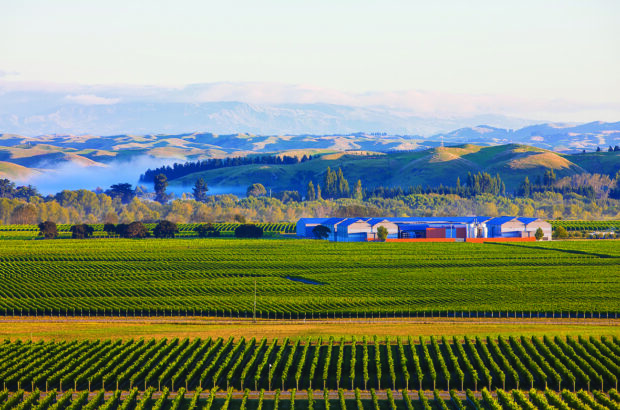Growing up in the Loire, Pascaline Lepeltier turned from an academic path in philosophy to wine. In 2018, she won the Union de la Sommellerie Française Best Sommelier of France title, and became the first woman ever to win the prestigious Meilleur Ouvrier de France award in Sommellerie. She has been based in New York since 2009 where she runs the beverage program of Chambers restaurant, and her first solo book A Thousand Vines will be published in English next year in the UK and the US by Mitchell Beazley.
Sometimes, one must travel thousands of miles only to realise you had gold in your hands. Growing up in Angers, I was unaware that the hills of nearby Savennières on which I frolicked as a child were the exceptional terroirs of wines I would, 15 years later, pour with passion in my New York restaurant: wines I would come to consider some of the best in the world. I had also to cross the Atlantic to realise how special the Chenin Blanc grape is, and to understand why it belongs in the pantheon of the top varieties.
It may not be a given for every wine lover. What makes Chenin outstanding – its versatility and its acidity – can also be its weakness. When it’s grown at too high a yield, or it’s not handled skilfully in the vineyard and cellar, you end up with a bland, acidic wine in which sugar or bubbles are often used to mask mediocrity. But when Chenin Blanc is carefully planted with the right clones, pruned for the desired style and thoughtfully vinified, it becomes this incredible terroir-absorber grape capable of expressing nuance in all possible styles: dry, off-dry, moelleux, sparkling, even flor-affected!
If South Africa boasts the most hectares of the grape, the Loire, its birthplace, produces the broadest stylistic range of Chenin Blanc, and Savennières is one of its most idiosyncratic incarnations. Historically sweet, the focus turned to dry in the mid-1950s for economic reasons, and since the 1980s the appellation has been revitalised by demanding winemakers who have revolutionised the austere style into a nuanced range of ‘Chenin-on-schist’ variations. These myriad expressions all share Savennières’ trademark features: power and lift. Its five schistous and volcanic slopes on the right bank of the Loire river have been covered with Chenin vines for many centuries. Its archetypal vineyard, the Coulée de Serrant, was planted by monks in 1130. Under the biodynamic tutelage of the Joly family, this 7ha monopole [single owner] produces extraordinary wines: tannic yet electric, broad yet saline.
La Roche aux Moines, with its 20ha planted, is the other distinctive hill, delivering a quintessential example of Chenin grown on slate – a dense mouthfeel (ripeness is never a problem), a complex and salivating bitterness, and a mix of kumquat, honey, camomile and quince with lingering acidity. The rest of the Savennières appellation, with its mix of plateaus, slopes and foothills, offers a wine for every palate. The early harvest yields a crisp, often unoaked style full of Meyer lemon and seringa flower, yet it can also be barrel aged on lees to reveal a richer, more ambitious wine. It goes without saying that the options for pairings are infinite, from delicate raw scallops to poached river fish, tasty white meat to hard pressed cheese. And if you’re not yet convinced, the wines can age for decades for a fraction of the price of iconic wines of the same calibre. What’s not to love in Savennières?
Discovering Savennières: Lepeltier’s top picks
Domaine aux Moines, Savennières-Roche aux Moines 2019 is for me today the benchmark of Savennières (2020, £40.50 The Sourcing Table). Sourced from older vines planted on the best part of the hills, the wine is aged carefully for 18 months in oak by winemaker Tessa Laroche, polishing this diamond in the rough that is built to age.

Another favourite, brighter, more playful yet so terroir-driven is the Domaine Mosse, Arena Savennières 2020 (£44.93 Sip Wines) from the higher, sandier plateau of Epiré: a perfect example of low-intervention Chenin Blanc.

Finally, Thibaud Boudignon’s Clos de la Hutte Savennières 2020 (US$115-$120 Acker, Brooklyn Wine Exchange, K&L, Parcelle, Verve Wine) incarnates the chiselled, hyper-focused expression of La Possonnière: discreet when young, it will gain character and weight in the bottle.













